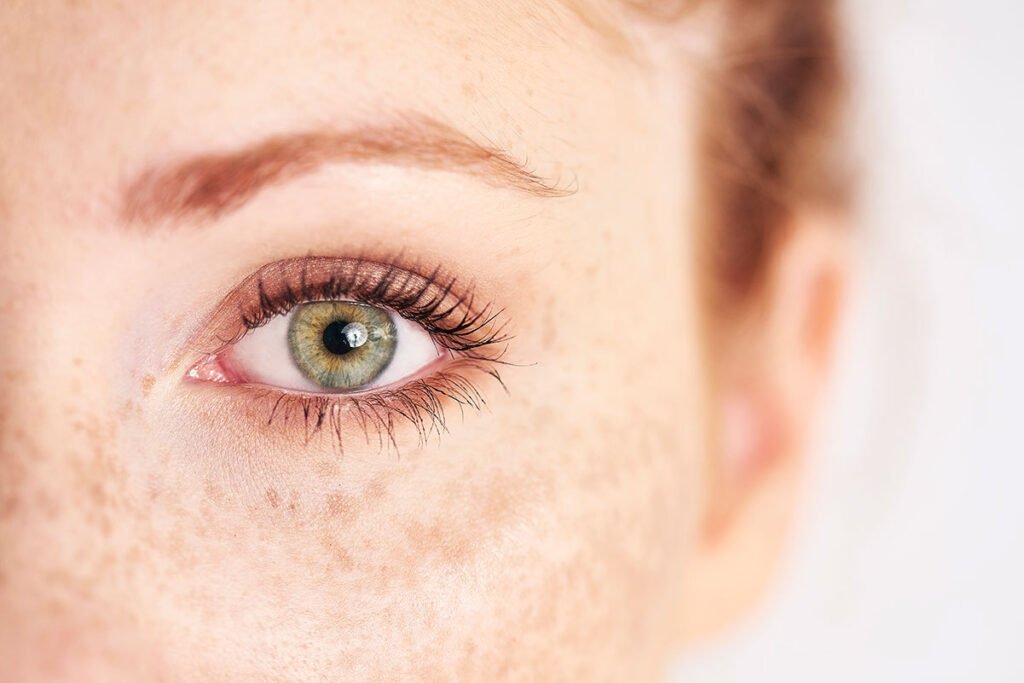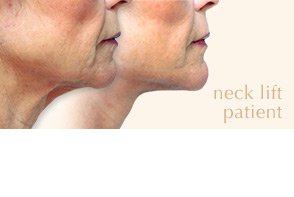Combining Eyelid Surgery and Non-Surgical Treatments for Optimal Results

Eyelid surgery is on the rise: according to the American Society of Plastic Surgeons, it was the third-most-performed cosmetic surgery in 2019. And while this surgery alone can help patients look significantly younger, refreshed, and more alert, its results can be further enhanced (and extended) by non-surgical treatments such as Botox, injectable fillers, laser skin treatments, and chemical peels.
What are my eyelid surgery options?
Eyelid surgery, or blepharoplasty, as it is clinically called, is an effective way to tighten loose skin around the eyes and remove unwanted under-eye bags, resulting in eyes that appear younger and more alert. Eyelid surgery is categorized into two distinct procedures: upper and lower blepharoplasty.
Upper blepharoplasty removes droopy upper eyelid skin that sags over the outer and upper eyes, restricting peripheral vision and causing a tired look. Upper blepharoplasty can also reposition displaced fat. The procedure can be performed for cosmetic and/or functional reasons.
Lower blepharoplasty removes under-eye bags and reduces puffiness and/or depressions beneath the lower eyelids. The procedure can also smooth wrinkles and lines in the lower eyelids. Lower blepharoplasty is almost always performed for cosmetic purposes.
Which procedures can enhance blepharoplasty results?
Eyelid surgery is very powerful on its own—able to improve both the appearance and function of the eyes—but its results can be magnified with non-surgical treatments. Another reason to consider non-surgical eye treatments after your blepharoplasty is because surgery cannot always correct all signs of aging around the eyes, like crow’s feet and certain age spots.
Before undergoing these additional eye treatments, make sure to discuss wait times and recovery with your plastic surgeon, as your skin will likely need time to heal from eyelid surgery.
Botox injections
With 7.7 million patients treated in 2019, Botox continues to be the most popular non-surgical cosmetic treatment. Botox can be used on an as-needed basis if you’re preparing for a wedding or other special event, or on a regular schedule if you love your look with it. In time, Botox can also train your facial muscles to relax, resulting in fewer wrinkles and fine lines with continued treatment. Botox also has an extremely safe track record, making it trusted by plastic surgeons and patients alike.
Eyelid surgery is very powerful on its own—able to improve both the appearance and function of the eyes—but its results can be magnified with non-surgical treatments.
How can Botox enhance my eyelid surgery?
Following your eyelid surgery, Botox can be injected into your brow to relax & lift heavy forehead muscles and open your eyes, giving you a more open and approachable appearance. Botox can also be used to treat glabellar lines (the frown lines between your eyebrows) and forehead lines to match your rejuvenated eye results and create a more youthful overall look. Botox injections last roughly three to four months, so regular treatments are necessary to maintain your results.
Dermal fillers
Dermal fillers can help refine blepharoplasty results. They are made from a variety of compounds, but they all have the same purpose: to plump up tissue and stimulate collagen production in your skin.
How can dermal fillers enhance my eyelid surgery?
Lower eyelid surgery removes excess skin and fat deposits below your eyes to eliminate under-eye bags and make you look younger and more refreshed; but after surgery, you may find that the area where your under-eye bags used to look a bit hollow. Here, a dermal filler can be injected to target any hollowness or remaining discoloration beneath your eyes. Dermal fillers like Juvéderm and Restylane utilize hyaluronic acid, a natural substance already present in our bodies, to plump skin and encourage collagen production in your body, so using these fillers will ensure your skin will continue to look younger and healthier over time. Dermal filler injections can last for six to 12 or more months, depending on the brand.
It’s important to note that any injections around the eyes carry risks including allergic reactions and blindness (though this is extremely rare), making it critical to visit a board certified plastic surgeon for your injections.
Laser skin resurfacing
Since eyelid surgery isn’t suited to treat fine wrinkles around the corners of the eyes (“crow’s feet”), laser skin resurfacing can be applied to the lower eyelids after blepharoplasty to correct crow’s feet and crepey skin to take your eye surgery results to the next level.
How can laser skin resurfacing enhance my eyelid surgery?
Laser skin resurfacing utilizes short, pulsating beams of light to target your skin’s deeper layers, stimulating the production of new collagen to tighten skin and reverse signs of aging. This means that in addition to smoothing those fine lines and wrinkles around your eyes, these treatments are especially effective at reducing sun damage and age spots, helping match your facial complexion to your newly rejuvenated eyelids.
There are two basic laser skin resurfacing techniques used: ablative and non-ablative.
- An ablative laser causes the top layer of skin to peel off, exposing tighter, firmer skin underneath. While the underlying skin will take time to heal after this “deep” laser treatment, your effort will be rewarded with skin that appears younger and fresher without the need for follow-up treatments.
- A non-ablative laser also delivers heat to underlying layers of the skin to stimulate collagen growth, tighten skin, and improve hyperpigmentation but doesn’t remove its outer layer. It is also referred to as a “non-wounding” laser. Non-ablative laser resurfacing typically requires multiple treatments, as it is a less intense skin resurfacing treatment than ablative laser resurfacing.
Ablative laser resurfacing treatments generally induce more collagen growth than non-ablative treatments, however, with regular non-ablative laser resurfacing treatments, you can gradually improve your skin’s collagen production, leading to more toned-looking skin over time.
Does laser skin resurfacing work on patients with darker skin?
You may have heard that laser skin resurfacing is risky for patients with hyperpigmentation or darker skin tones. While it is true that certain lasers pose a higher risk for these patients, there are safe and effective options, which Dr. Conway is happy to discuss with you.
Can I have laser skin resurfacing during my eyelid surgery?
In some cases, it is most effective to undergo laser skin resurfacing during blepharoplasty for optimal results, while other times it is necessary to wait at least six months after your eyelid surgery. Dr. Conway can discuss whether you should combine your laser skin resurfacing treatment with your eyelid surgery, or wait.
Chemical peels
During a chemical peel, a skincare specialist applies a specially-formulated solution consisting of one or more of the following chemicals to certain areas of your skin: glycolic acid, trichloroacetic acid, salicylic acid, lactic acid, or carbolic acid (phenol). This solution causes the treated skin to blister and peel off, allowing fresh, new skin cells to grow in place.
How can chemical peels enhance my eyelid surgery?
Chemical peels can be very effective in treating sun damage and fine lines around the eyes, as the new skin that emerges from the exfoliation is often smoother, less wrinkled, and has less environmental damage. Chemical peels can also reduce discoloration around the eyes, further enhancing the results of eye surgery.
How long will my eyelid surgery results last?
The non-surgical treatments we’ve highlighted in this post can help enhance and extend your eyelid surgery results for years, but to maintain optimal eye results, you may eventually wish to undergo a second blepharoplasty procedure. We find that for most patients, this point comes 10 to 15 years after their initial surgery.
To learn more about eyelid surgery or to discuss non-surgical eye treatments, contact board certified plastic surgeon Dr. Donald Conway. Dr. Conway has performed plastic surgery in the Asheville, North Carolina area for over 20 years and would love to help you achieve your aesthetic goals. Contact Dr. Conway online or call (828) 210-9333 today.



